
Living with the 2023 Ford Everest
JUMP AHEAD
- Introduction: Built to scale
- Update 1: Head for heights
- Update 2: It's peaked
- Update 3 & conclusion: Post script
Built to scale
- Price as tested: $69,090
- This month: 4001km @ 9.5L/100km
- Overall: 4001km @ 9.5L/100km
As our 2023 COTY winner, the Ford Everest has been a popular addition to the Wheels fleet.
So much so, that it took nearly three weeks before I managed to get hold of it – and it's had a huge first month.
First, Street Machine editor Simon Telford used it to tow some overboosted confection off to a fly-blown bush dragstrip, and then photographer Ellen Dewar snaffled the keys in order to disappear off on a week-long assignment at Winton and the high country. When it returned, the previously box-fresh Everest definitely had that slightly funky road-trip tang to it.
I can see why it's in demand. Everyone in the Wheels office loves the new Ranger, and a more versatile and family-friendly SUV version built loosely on those bones was always going to be popular. Factor in a tow bar, 600Nm of torque on tap and a towing capacity of 3500kg and it has me wondering about the profit margins on a hot donut trailer.

Of course, it's more than just a fenestrated pick-up. The rear end is coil-sprung rather than featuring leafs to soak up road bumps and there's a Watt's linkage back there too.
At the other end is a punchy 184kW V6 turbodiesel that can trace its roots all the way back to 2004 and the Gemini joint venture between Ford and PSA Peugeot Citroen, variants of the engine appearing in the likes of the Land Rover Discovery 3, the Jaguar S-Type, the Citroen C5 and the Peugeot 407.
Still, Bizzarrini's V12 lasted in Lamborghinis from the 1963 350 GTV to the 2010 Murcielago SuperVeloce with a few tweaks along the way, so we won't hold a lengthy lineage against the Everest's lump.
We opted for the Sport trim, which is one down from the Platinum range-topper, missing out on kit like a Bang & Olufsen 10-speaker stereo and 21-inch alloy wheels. One feature that, strangely, also goes amiss on anything other than the flagship is tyre-pressure monitoring.
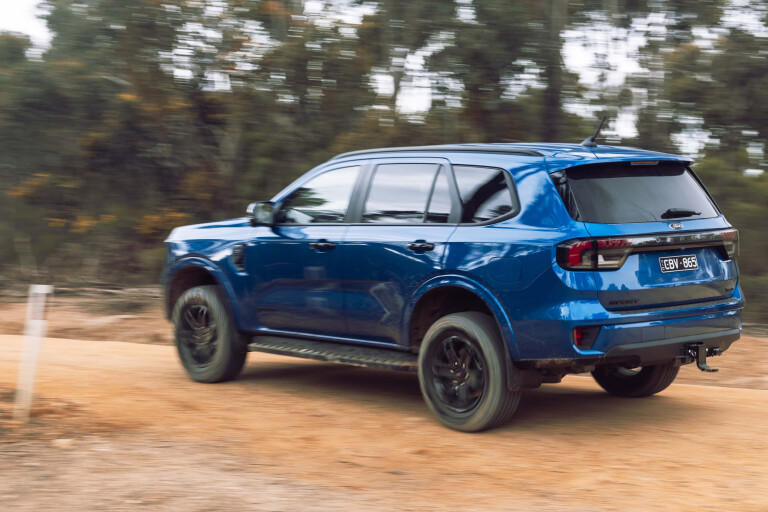
The reason I noticed was that the Everest seemed to have a bit of a pull to the right. After checking pressures at a servo and everything seeming good, I found that it was Ford's lane-keep system, which positions the vehicle a little further right in the lane than I would naturally, so I'd been driving for about an hour down a freeway tensing the wrists against the motor of the electrically assisted steering. Fail.
Given Telf and Ellen's road trips, by the time I took delivery of the Everest, a notice had flashed up in the dash signalling that it needed replenishing with AdBlue within a couple of hundred kilometres or it'd throw a hissy and refuse to start.
I realised, to my embarrassment, that this was something I'd never actually done before, having never owned a diesel vehicle which needed it. The process was no more involved than topping up your washer bottle but I deliberately bought a smaller bottle in order to monitor its consumption of the foul-smelling brew.
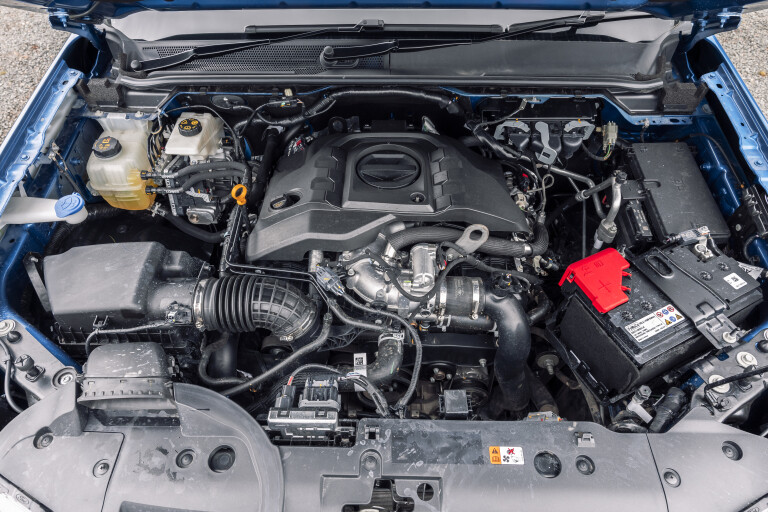
I still think the Sport is easily the best choice in the Everest line up. For me, all-wheel drive is a no-brainer on a vehicle with this sort of rough track potential and if you want drive going to each corner, you'll also love the clever fire-and-forget automatic 4WD system, which is night and day smarter than the manual setup that you used to get on Everest.
If you want the extra poke of the V6 (and you should), that narrows your choice down to Sport or Platinum and given that the Sport is $8000 cheaper and, to these eyes at least, a better looking vehicle with its black rather than chrome exterior dress-up, the decision almost makes itself. At only $2500 more than the equivalent Ranger Sport V6, the seven-seat Everest looks strong value for money at $69,090 plus on-roads.
We've got some big assignments planned for the Everest to really establish its bona fides. Keeping the keys in my possession will be a good start.
Head for heights
Price as tested: $69,090
This month: 3536km @ 9.6L/100km
Overall: 7537km @ 9.5L/100km
Our Car of the Year tests its mettle on an epic high country drive
You’d like Eddy. He’s a lovely bloke who’s been at Ford for years and is in charge of the press garage. Right now, all I can think of is how Eddy is going to react when I tell him his Everest has fallen off a mountain. Earlier in the day I was wondering how Eddy would react when I told him that I’d lost his car to a lake.
Or had sunk into a quagmire never to be seen again on the Dargo High Plains road.
You see, I’d managed to find myself in one of those positions where I couldn’t go back down the mountain (too steep and narrow) but going further up to the summit on the far horizon was edging a little out of my comfort zone. This is like the morning commute for the blokes who work here on 4x4 Australia.
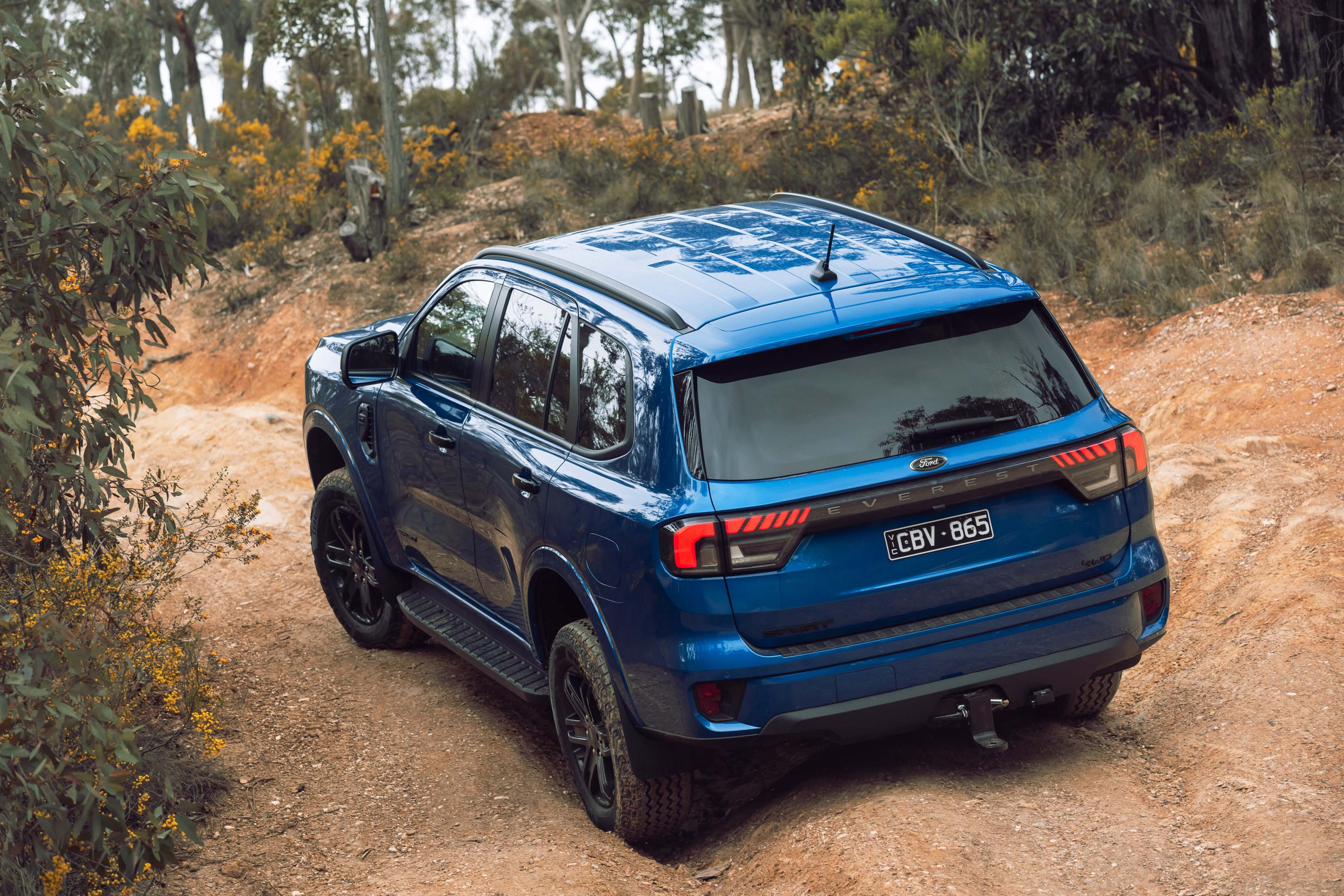
Me? I’m chewing such a sheaf of seat upholstery that poor Eddy’s going to wonder what happened to it.
I have everything working to help me. Diff lock, low range, A/T tyres, the forward camera system, everything. If I had training wheels to support me, I’d bolt those on too. I have no shame. I can’t even grow a decent beard, so I’d never be accepted by 4x4 Australia.
Somehow, against all the odds, the Everest summits at the trig point on the top of the Blue Rag Range track, a showroom-spec SUV sitting proudly amongst all the raised and snorkeled LandCruisers and Patrols. Cue a reader letter showing somebody driving up in a Mazda MX-5.
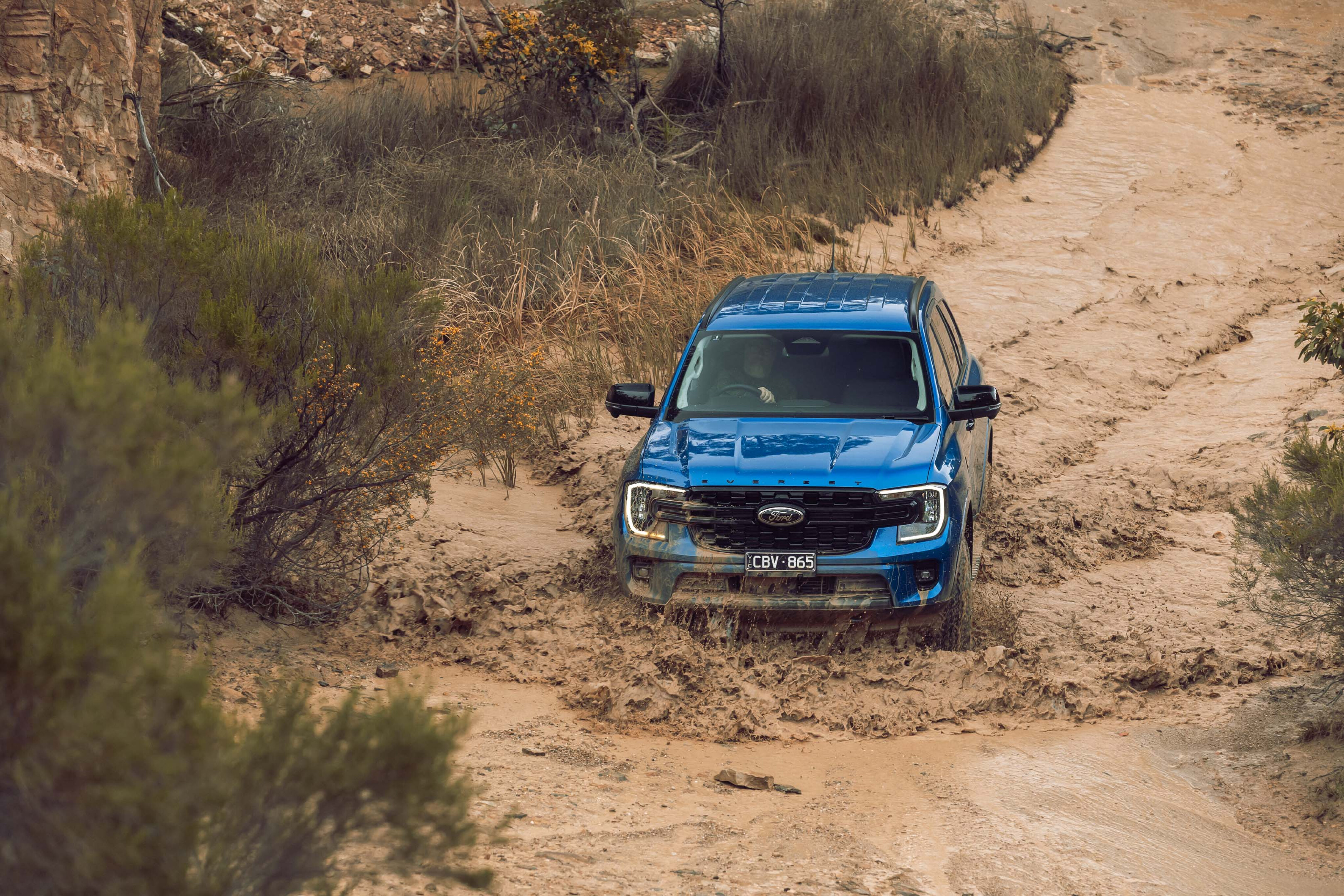
From there, I drove back down and over to Mount Hotham, clocking the snow still hiding in the south-facing chutes. Then it was 175km of unrelenting twisties down through Dinner Plain, Omeo and Bairnsdale before arriving at the shores of the Macleod Morass for a stretch, a bag of chips and the tedious schlep back to south-east Melbourne.
What else could have polished that off so adroitly? As you start casting for options, add in the rider ‘for $70K’ and I’ll save you a bunch of trouble. Nothing. Nada. Zip.
It probably won’t surprise you to hear that the Everest was good off-road, but it was on the drive back down from Australia’s highest stretch of bitumen that really impressed. Yes, you make allowances for the fact that this V6 Sport is riding on the 18-inch A/T tyres rather than the 20-inch street tyres that are a no-cost option, but the knobby tyres buy you a bunch of extra capability.
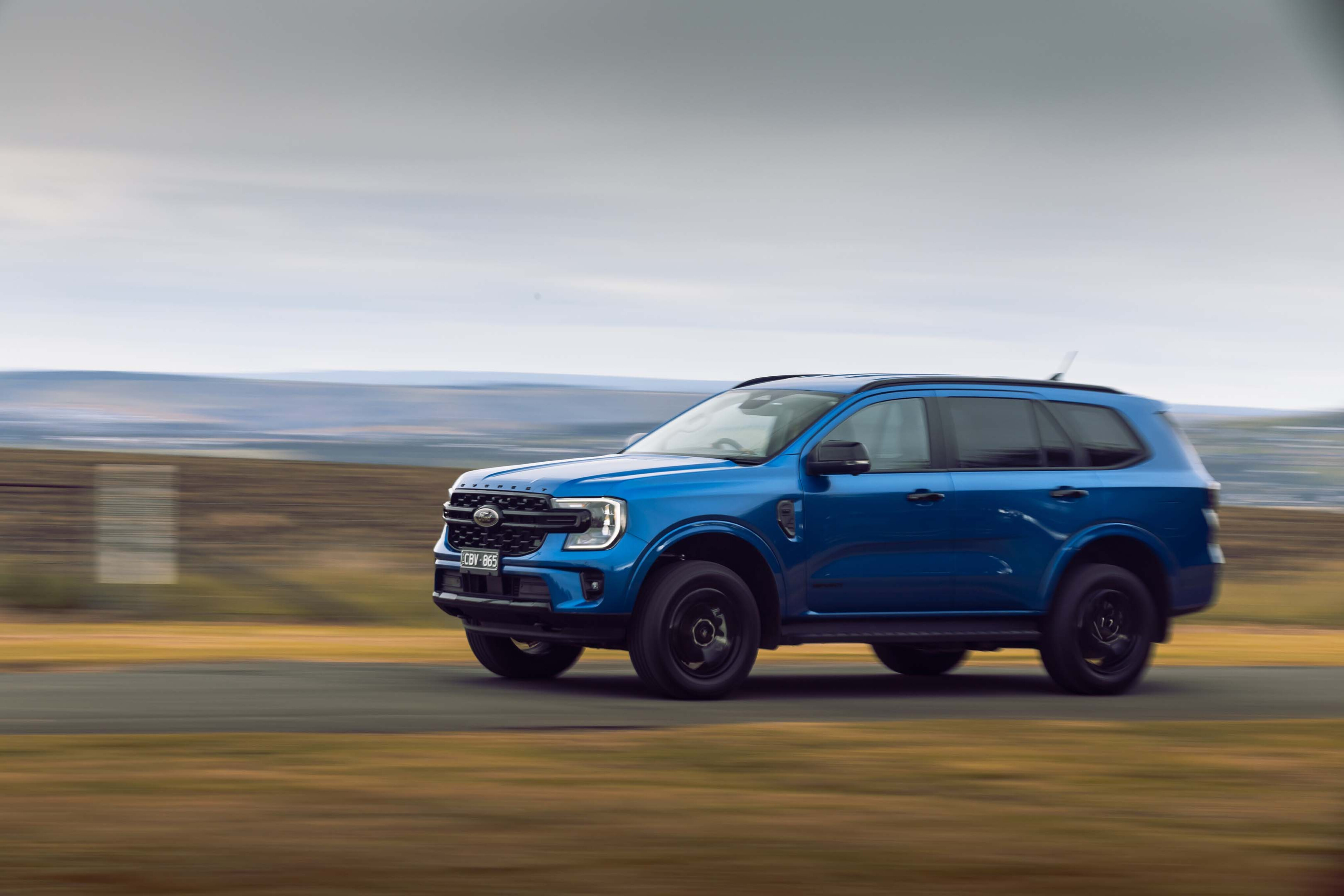
Had I ventured on this route with the 20s fitted, I’d still be in that bog on the Dargo road, out of cellphone coverage, wondering how long a man could sustain himself on half a bag of Haribo Goldbears.
Once you’d keyed into the limitsof the A/T rubber, it was then a case of seeing how far you could prod them, smearing the big Ford into tight corners, marvelling at its predictability and sheer grunt and, I’ll confess, wondering how much better it’d be with paddle shifters (note for the facelift, Ford).
After an 11-hour round trip, I arrive back home beyond certain that we absolutely nailed the verdict for Car of the Year 2023. The phone rings. Eddy wants the Everest back. Our time is nearly up. Stay tuned for the wrap next month when I’ll give the full report card.
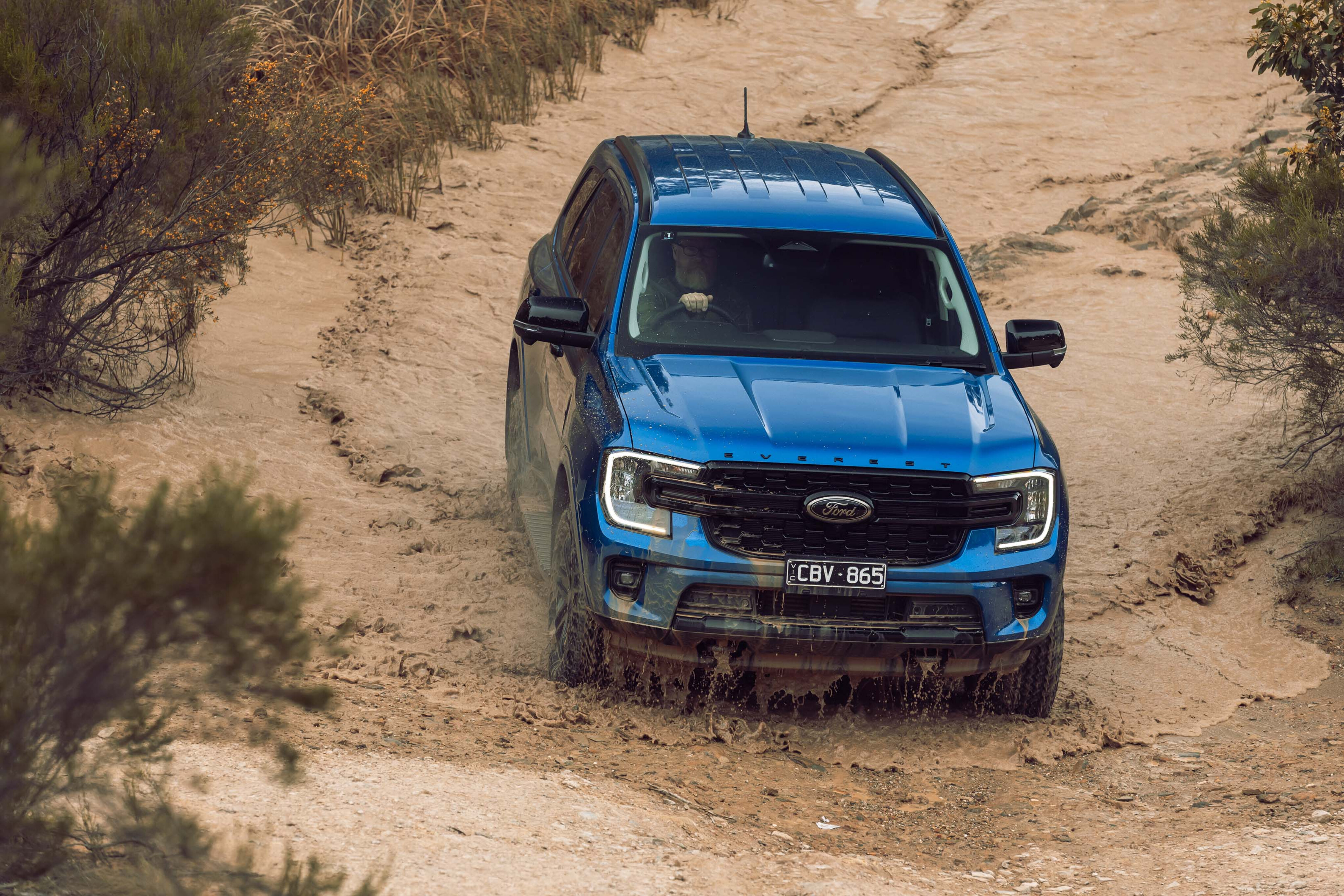
It's peaked
- Price as tested: $69,090
- This month: 2610km @ 9.7L/100km
- Overall: 10,147km @ 9.6L/100km
After three months, our COTY winner is left standing tall
As I write this, a genial chap called Chris is pulling out of the Wheels Media car park in ‘my’ Everest Sport.
It’s on its way back to Ford having covered just over 10,00kms in a little over three months here. If you judge a long termer by its popularity, then the Everest Sport V6 might have been the most in-demand vehicle we’ve had through the garage in ages.
Everybody had a use for it, whether that was towing a race car, family days out, a trip to IKEA or an off-road jaunt that they’d long had their eye on. I was pestered for the keys way more often than when McLaren saw fit to let us run a supercar with billionaire doors.
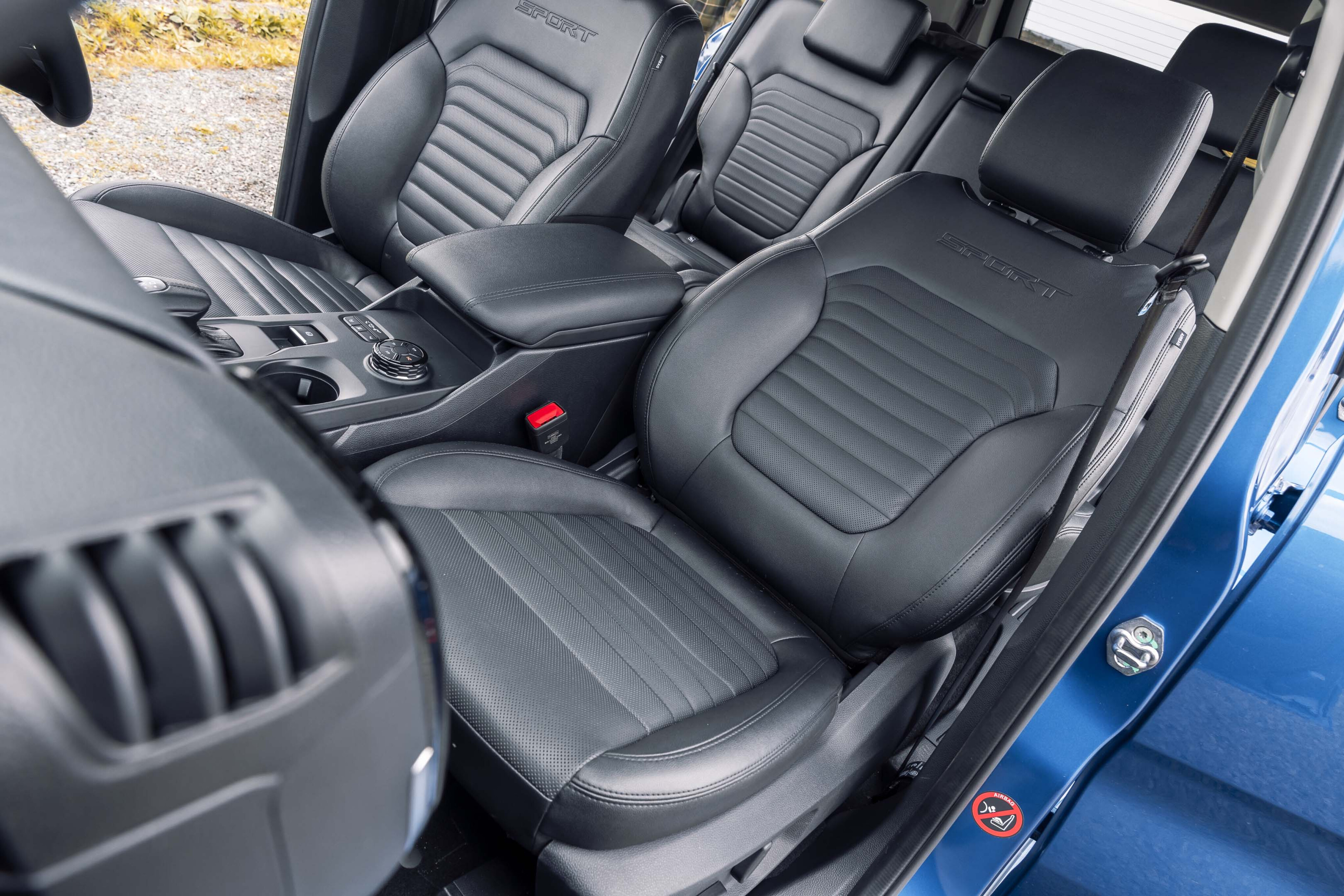
Whenever it was returned, it drew praise. “I can’t believe you get all of that for less than $70 grand,” reckoned Ben, our tech guru. “We towed the MX-5 all the way to Heathcote and by the time we were out of Melbourne, we’d forgotten we had a trailer on the back,” said Telf from Street Machine.
“Near perfect,” reckoned chief snapper Ellen after a photographic assignment in the high country. “I could have taken twice as much gear.”
I normally pride myself on getting decent fuel figures out of my long termers, so after so many loans, especially ones where the Everest would clearly be subjected to some demand, I was worried that the running total might lift a bit higher than I expected.
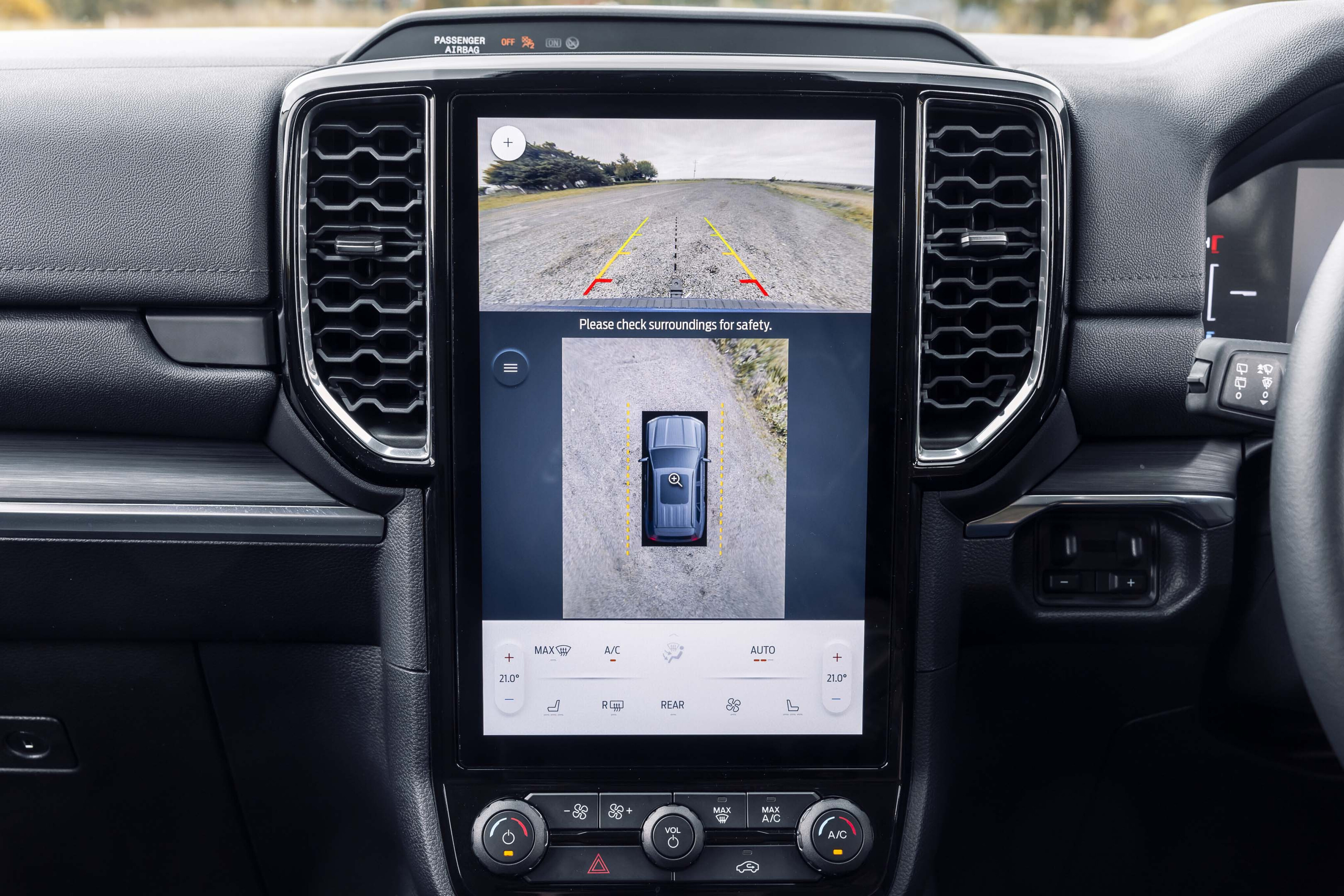
Nevertheless, getting single-figure fuel economy from a 2.4-tonne SUV over 10,000km isn’t at all bad. I look back at old copies of Wheels and note long termers like the 2.0-litre Focus hatch that Robbo ran a decade ago which returned 10.2L/100km.
I know. Diesel and petrol. Apples and oranges, but it’s worth considering before you pigeonhole the Everest as some kind of vast and profligate lump. I did get through around $110 of AdBlue during my time with the Sport V6. I also discovered, rather belatedly, that AdBlue prices vary wildly.
I paid (for shame) $85 for a 10-litre tub at a servo, but if you’re prepared to shop around you ought to be able to nab it for $40 or $50. An expensive lesson learnt. The identical 3.0-litre V6 in the Ranger doesn’t require AdBlue due to different emissions regulations for commercial vehicles.
The new Ranger Wildtrak X 2.0-litre, being a car that’s sold into European markets, however, does require it. Go figure.
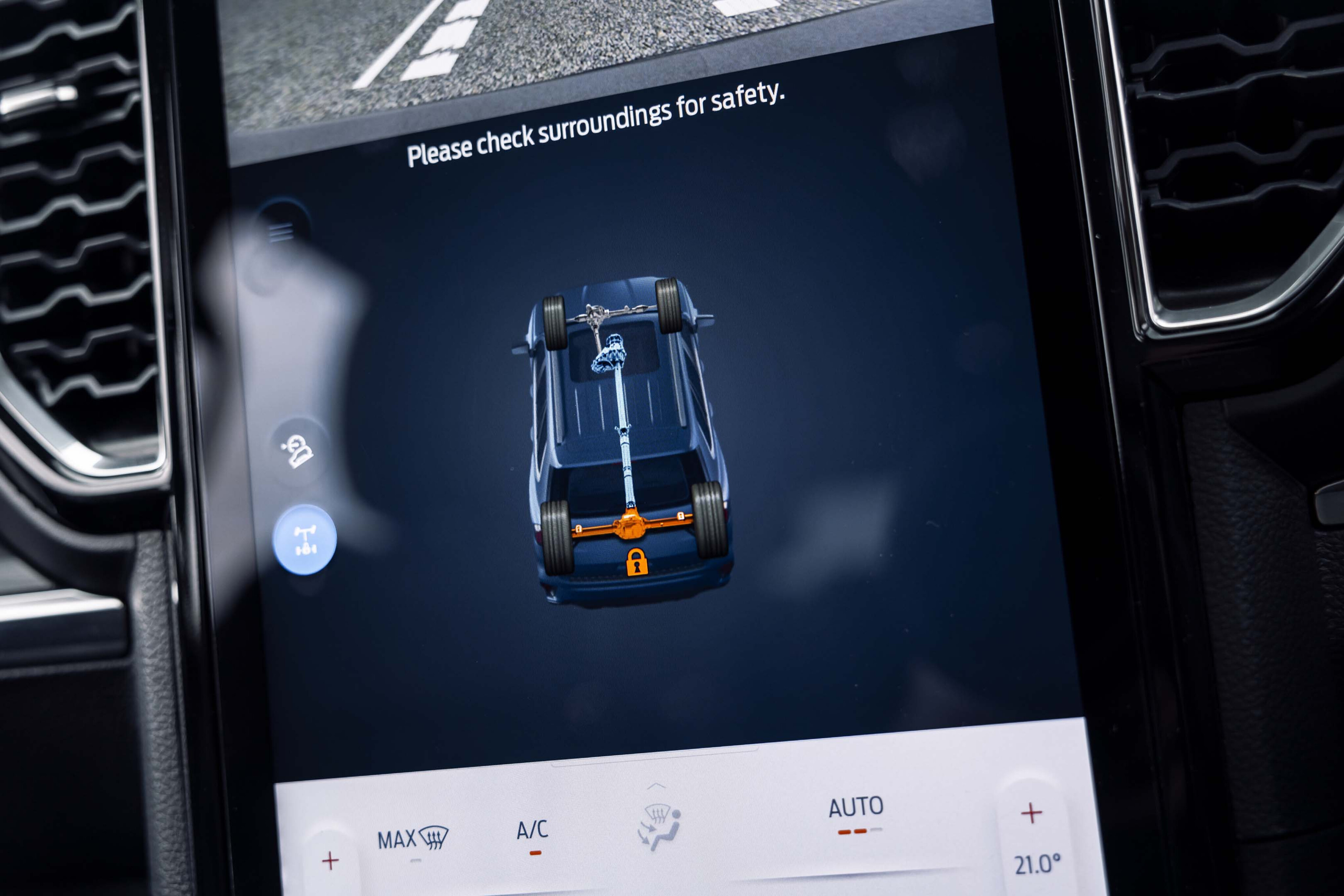
To conclude, the Everest’s been an classy long-term addition to the Wheels garage but it’s not perfect. For the facelift there are a few things I’d alter. I’d up-spec the rear dampers, I’d change the plasticky drive mode selector so that you didn’t have to slowly cycle through each setting in turn, I’d give it wheel-mounted paddle shifters, I’d create a little more contour in the rear bench seats and add standard tyre-pressure monitoring across the range. And that would honestly be about it.
Now the obvious first-world problem is how to replace the big Ford. Trying to sort a nearish like-for-like is probably lining myself up for disappointment so I may have to think a little laterally about this one.
In the meantime, I feel I have banked a lot of favours from those who have enjoyed the Everest whilst I’ve nominally been its custodian. Time to call a few in.
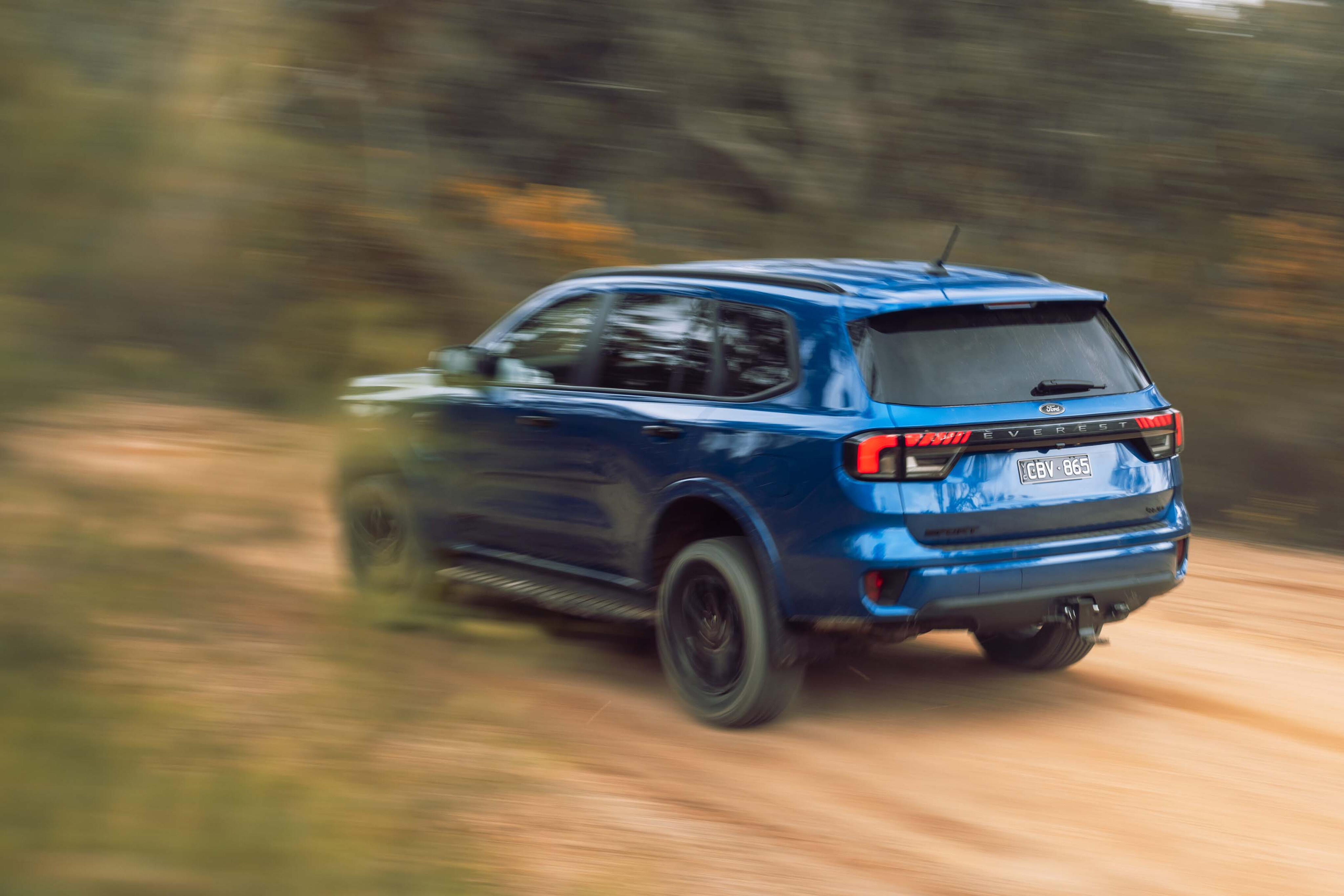
Post script
- Price as tested: $79,967
- This month: 610km @ 10.2L/100km
- Overall: 610km @ 10.2L/100km
After our spell with the Everest V6 Sport we finish with a month in the flagship Platinum model
Product managers for car manufacturers spend a lot of time poring over specifications. For the most part, they tend to be very good at their jobs. Once in a while, they’ll get things a bit wrong and create models that are either not attractive enough and which wither on the vine, or which everybody gravitates to, creating supply issues and a neglected range structure.
I’d always thought the Everest V6 Sport with the 18-inch all-terrain tyres was the sweet spot in the range in terms of equipment and pricing. It did, however, lack a tyre-pressure monitoring system, a fitment you could only get on the range-topping Platinum version.
So, to round out our long-term stint with the Everest, the V6 Sport has gone back and we have a month in the Platinum.
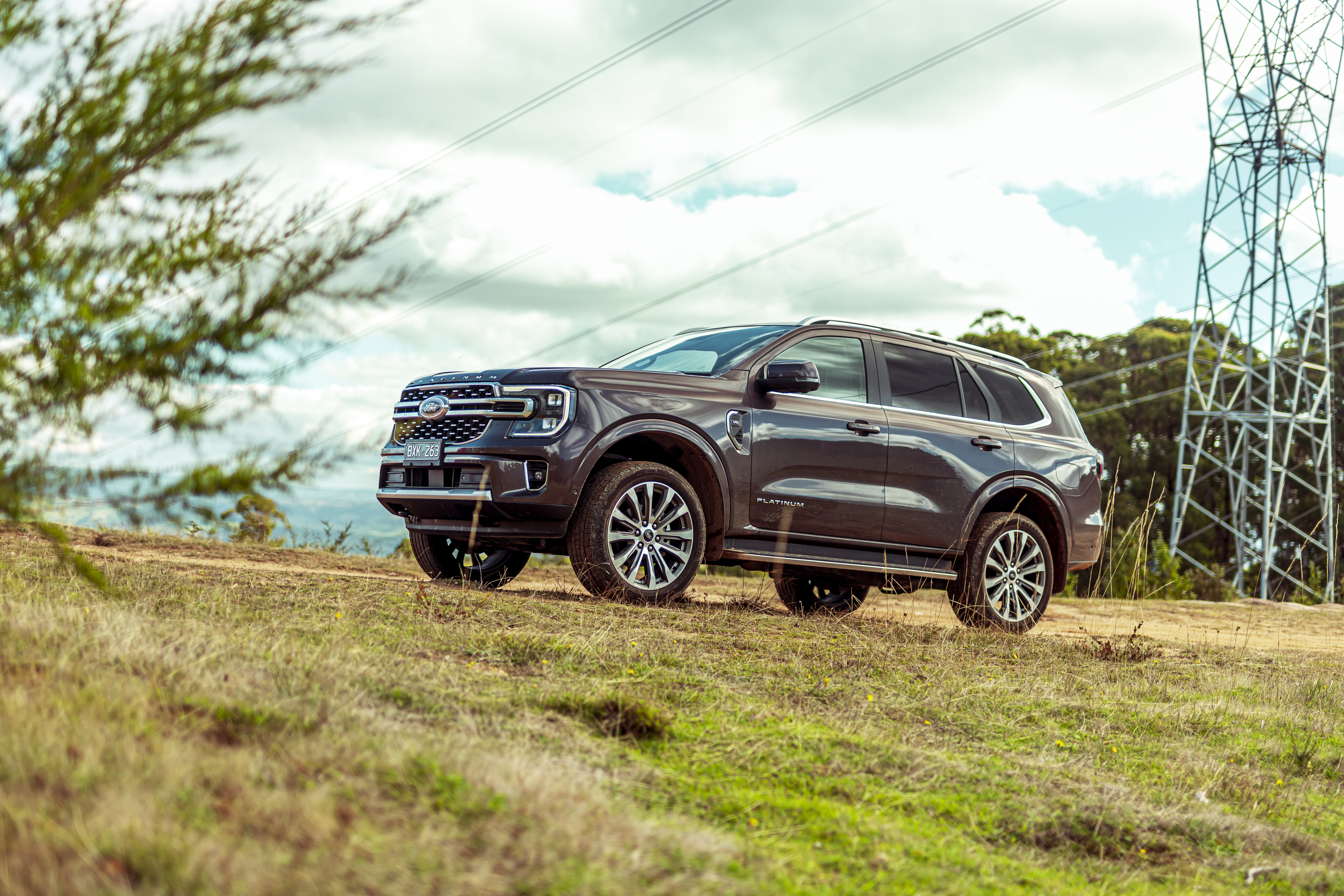
For another $8K, you get the aforementioned TPMS plus quilted leather seats, a 12-speaker Bang and Olufsen stereo, satin chrome exterior accents, matrix LED headlights, a dual panel panoramic roof, a heated steering wheel, seat heating for the second row, zone lighting, and active park assist among the trim highlights.
The 21-inch alloy wheels make the Platinum’s ride notably more nervous than the Sport on 18-inch AT rubber, and poorly surfaced bitumen can introduce some body shudder and, consequently, head toss for cabin occupants. It also means that because you have less sidewall to protect the wheels, you’ll need to be far more careful when heading off road.
Fitting 18-inch AT tyres therefore seems a win-win-win; better off-road ability, a more accommodating ride on-road and far less chance of damaging your rims.
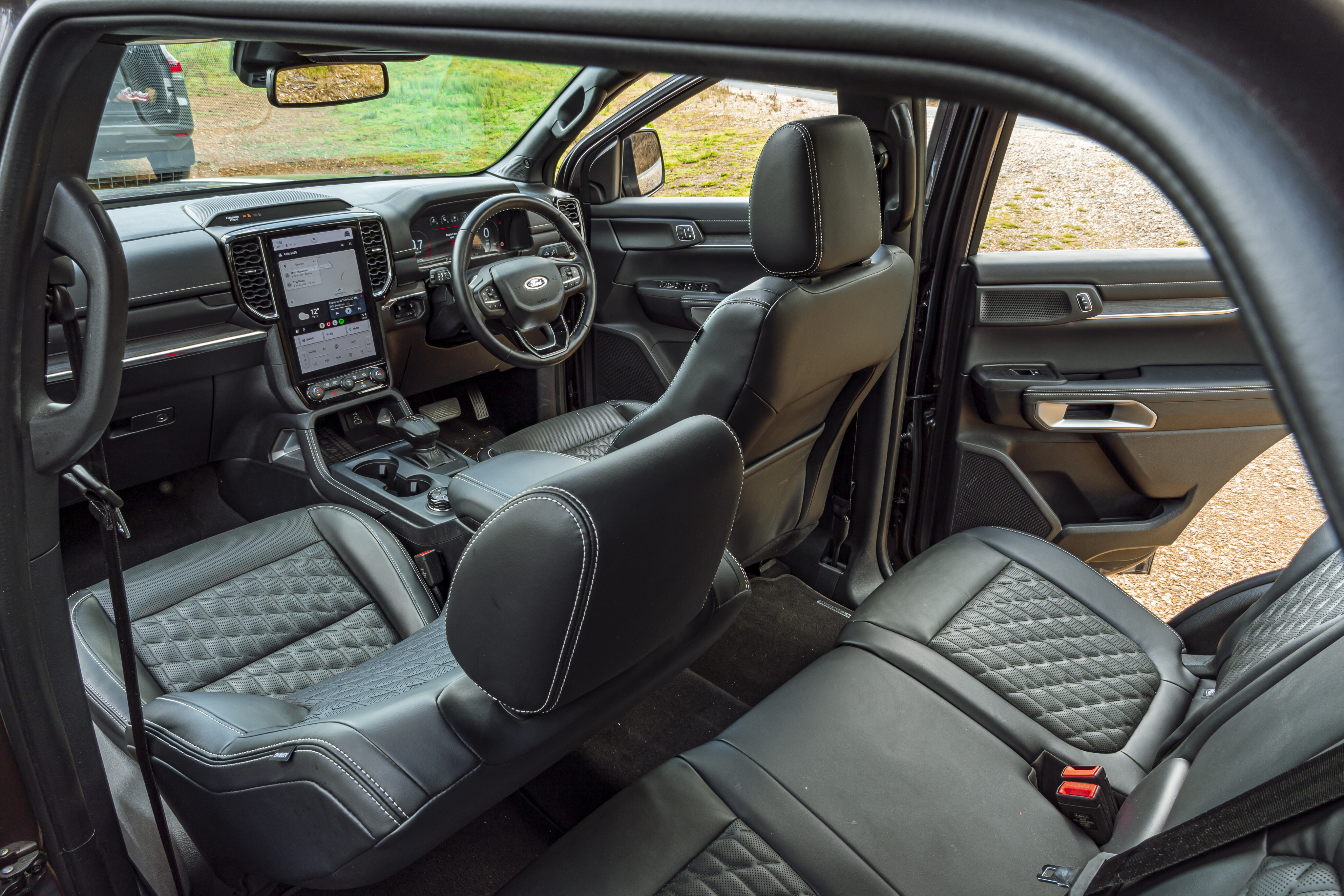
I suppose it was an instance of Murphy’s Law that dictated that as soon as I received the only variant with a tyre-pressure monitoring system that I’d pick up a slow puncture, but there we have it. After a few days away on break, I returned to Tullamarine’s long-term car park to find the offside rear showing a meagre nine out of a desired 37psi.
Rather than scrabble about the vehicle in the rain and fit the spare, I limped it to the adjacent servo and topped up the pressures which would then leach away by about 5psi per day.
I’m now wishing I’d bitten that particular bullet and fitted the spare, as it would have saved me far more time and trouble than stopping every day to give it a minute at the compressor.

Would I pay the extra for the Platinum? I might, you know. It’d need the 18-inch rubber on it, obviously, but I can’t deny the TPMS has been a godsend. Perhaps I wouldn’t have needed it with more durable boots on.
I love the punch of the stereo but I’m so-so on the brightwork on the exterior. The heated steering wheel earns a tick, as does the excellent matrix lighting.
While I still think the V6 Sport is more right for more people than any other model in the Everest line-up, for me, a well-specced Platinum would certainly have me tempted. Catch me at the air pump.
Specifications
| 2023 Ford Everest V6 Sport | |
|---|---|
| Price | $69,090 |
| Engine | V6 turbo diesel |
| Capacity | 2993cc |
| Max Power | 184kW at 3750rpm |
| Max Torque | 600Nm at 1750 to 2250rpm |
| Transmission | 10-speed automatic |
| 4x4 system | 2WD, 4x4 auto, 4x4 high range, 4x4 low range |
| Crawl ratio | N/A |
| Construction | Body-on-frame 5-door wagon |
| Front suspension | Double wishbone IFS |
| Rear suspension | Live axle, coil springs, multi-links, Watt’s link |
| Tyres | 275/45R21 |
| Weight | 2492kg (kerb) |
| GVM | 3150kg |
| GCM | 6250kg |
| Towing capacity | 3500kg |
| Payload | 696kg |
| Seats | 7 |
| Fuel Tank | 80L |
| ADR fuel use | 8.5L/100km |
| On-test fuel use | 11.1L/100km |
| Approach angle | 30.2° |
| Rampover angle | 21.9° |
| Departure angle | 23° |
| Ground clearance | 226mm |
| Wading depth | 800mm |




COMMENTS